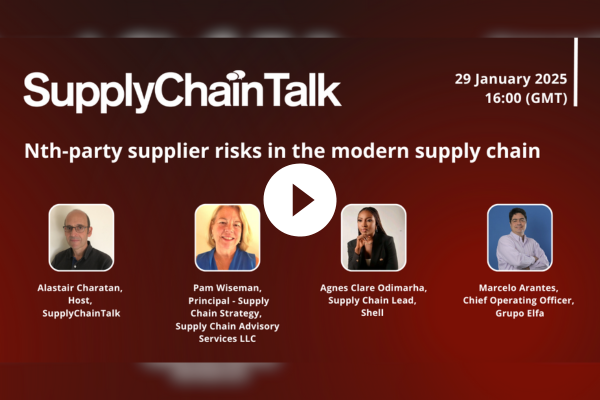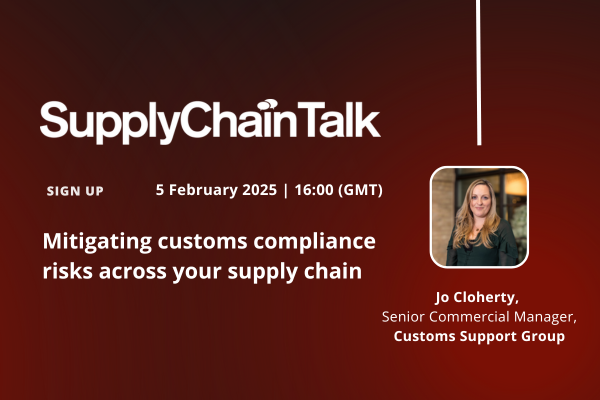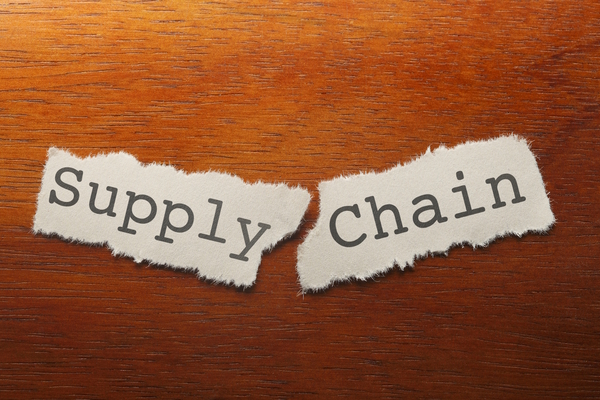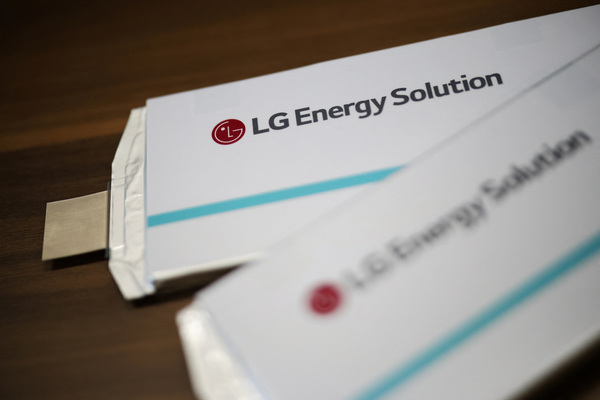SupplyChainTalk: Building and managing a sustainable supply chain
On 29 June, Supply Chain Talk host Jonathan Morgan was joined by Michael Brooman, Head of Supply Chain, Community Fibre Limited; Soraya Karimi-Ghovanlou, Supply Chain Director, Smithfield Foods; Dan Withers, Head of Procurement - Supply Chain & Logistics, Sainsbury’s; and Anand Medepalli, Chief Product Officer, Shippeo.
Views on news
A UN report said shocks, such as energy outages, could hit food supply chains. But despite the gloomy forecasts, the UN report has also suggested some actions that could mitigate the negative impacts on food security, such as better managed fisheries, forest conservation, agroecological farming and agroforestry. According to Professor Tim Lang, the UK is one global shock away from a food crisis – with 46% of fresh vegetables and 84% of fresh fruit coming from imports. In times of crisis is it’s key that businesses help their tier2 and 3 suppliers to manage the crisis to keep their supply chains up and running. Although shortages in toilet paper or food staples during Covid were unprecedented, for supply chains, disruptions have always been the norm. Today, tackling shortages in the supply chain is also harder because solutions to tackle them have to be sustainable as well. Supply chains have become so volatile that the only way to manage them is to make them fully transparent. Onshoring and nearshoring can improve a supply chain’s resilience but may not help if a crisis hits a wider geographical area.
Leveraging digital tools to boost productivity
Even though sometimes it’s hard to explain sustainability considerations to the board, it has to be pursued as customers are keener than ever to learn about the provenance and carbon footprint of products. The reduction of GHG emissions have to take place end-to-end across the supply chain from raw materials to packaging to reverse logistics. Sustainability is now in the centre of public consciousness – so much so that the New York Times has a dedicated desk for supply chain issues. On average, 60% of a business’s emissions come from its supply chain. The good thing is that most of the time reducing the carbon footprint cuts costs as well and makes the business model more efficient – especially in the long run. Competitors within the same sectors also need to adopt a collaborative mindset, where, for example, businesses can work on their logistics together to reduce empty miles. Different forms of collaboration already do exist in the industry, which now need to be extended to the realm of carbon footprint reduction too. The disclosure of Scope I and II emissions is already mandated, It’s just a matter of time that Scope 3 – which supply chain and transportation related emissions come under – will need to be reported too. But procurement is in bad need of expertise on how to calculate and compare carbon footprints. The supply chain’s close links with academia are key in applying new technologies to existing pain points. Having smartphones, consumers nowadays often know better where the products are than businesses themselves. As awareness of carbon footprints is increasing, we’ll probably see carbon emission traffic lights on product packaging sometime soon.
The panel’s advice
Understand and carbon-map your supply chain to see where and how you can decrease your footprint.
To be successful, businesses and their supply chains need to keep up with the speed of the savvy consumer.

Business Reporter Team
Most Viewed
Winston House, 3rd Floor, Units 306-309, 2-4 Dollis Park, London, N3 1HF
23-29 Hendon Lane, London, N3 1RT
020 8349 4363
© 2025, Lyonsdown Limited. Business Reporter® is a registered trademark of Lyonsdown Ltd. VAT registration number: 830519543





